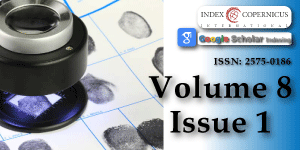Review on Forensic Analysis of Microbiota in Human
Main Article Content
Abstract
Numerous studies relate differences in microbial communities to humans. The microbiome is fundamental for the human turn of events, invulnerability, and nourishment. The ordinary microbiota has explicit capability in supplement digestion, xenobiotic and drug digestion, upkeep of underlying trustworthiness of the stomach mucosal boundary, immunomodulation, and assurance against microorganisms. Out of nowhere, it assumes a significant part in criminology. In a few criminal examinations, such perceptible changes in the microbiome and mycobiome can decide the reason or the genuine spot of death. The microbial follows found at the crime location can likewise give obvious proof of responsibility. The point of this audit was to study the microbiome and its applications in scientific sciences and to decide the primary lines of examination that are emerging, as well as its potential commitments to the scientific field.
Article Details
Copyright (c) 2024 Singh S, et al.

This work is licensed under a Creative Commons Attribution 4.0 International License.
Roux C, Talbot-Wright B, Robertson J, Crispino F, Ribaux O. The end of the (forensic science) world as we know it? The example of trace evidence. Philos Trans R Soc Lond B Biol Sci. 2015; 370(1674):20140260. Available from: https://pubmed.ncbi.nlm.nih.gov/26101285/
Using the Microbiome to Unlock the Secrets of Forensic Evidence: Classification of the Body Source of Origin of Human Traces. Available from: https://www.qiagen.com/us/knowledge-and-support/knowledge-hub/events-and-webinars/webinars/using-microbiome-to-unlock-secrets-of-forensic-evidence
Metcalf JL, Parfrey WL, Gonzalez A, Lauber CL, Knights D, Ackermann G, et al. A microbial clock provides an accurate estimate of the postmortem interval in a mouse model system. Elife. 2013; 15; 2:e01104. Available from: https://pubmed.ncbi.nlm.nih.gov/24137541/
Inman K, Rudin N. The origin of evidence. Forensic Sci Int. 2002; 126(1):11-6. Available from: https://pubmed.ncbi.nlm.nih.gov/11955825/
Bouslimani A, Melnik AV, Xu Z, Amir A, da Silva RR, Wang M, et al. Lifestyle chemistries from phones for individual profiling. Proc Natl Acad Sci. USA. 2016; 113(48):E7645-E7654. Available from: https://pubmed.ncbi.nlm.nih.gov/27849584/
Harbison SA, Fleming RI. Forensic body fluid identification: State of the art. Res. Rep. Forensic Med. Sci. 2016; 6: 11-23. Available from: https://www.dovepress.com/forensic-body-fluid-identification-state-of-the-art-peer-reviewed-fulltext-article-RRFMS
Hanssen EN, Avershina E, Rudi K, Gill P, Snipen L. Body fluid prediction from microbial patterns for forensic application. Forensic Sci Int Genet. 2017; 30:10-17. Available from: https://pubmed.ncbi.nlm.nih.gov/28605650/
Dobay A, Haas C, Fucile G, Downey N, Morrison HG, Kratzer A, et al. Microbiome-based body fluid identification of samples exposed to indoor conditions. Forensic Sci Int Genet. 2019; 40:105-113. Available from: https://pubmed.ncbi.nlm.nih.gov/30785061/





